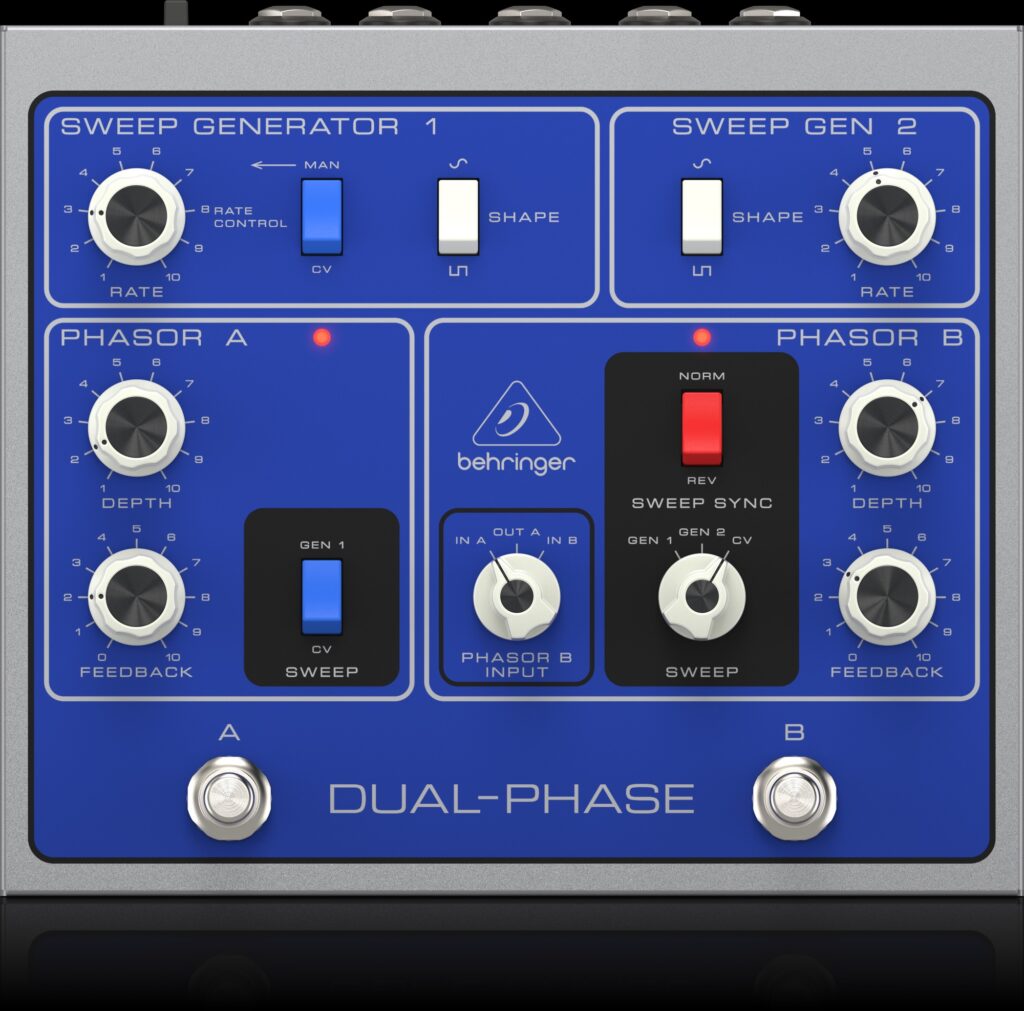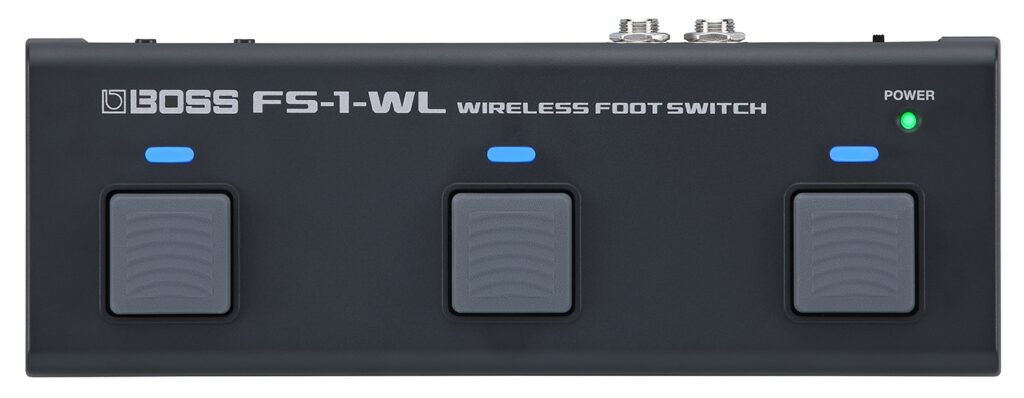I was a Mu-Tron enthusiast back in the day, and I still am an enthusiast today. More so, after buying a Behringer Dual-Phase.
I didn’t have the bucks for a Mu-Tron Bi-phase in the 1970s and I sure as heck cannot afford a vintage original. Mu-Tron offer their own re-issue at an affordable $479 USD. The Behringer Dual-Phase set me back $100 — almost an impulse purchase.
Vintage Mu-Tron units are $2,000 and up. I have two vintage Mu-Tron pedals — Micro V and C-200 Volume/Wah. Frankly, I’m scared to turn them on, especially the AC-powered Volume/Wah. I don’t want to see money go up in smoke!
The Dual-Phase has a bit of a checkered past for a young product. Behringer called it the “Behringer Bi-Phase”, ran into difficulty with the name, and paused the product. Eventually, it was released with the “Dual-Phase” moniker. No doubt there was a legal tussle somewhere.
Used Behringer units with the “Bi-Phase” graphic are commanding a premium — like a collectable penny with a misprint. The Behringer Dual-Phase is the same electronics and low selling price, so I don’t care if they call it “Uli’s phaser” or whatever.
When my Sweetwater sales engineer warned me that the Dual-Phase is discontinued, I bought one from Perfect Circuit. If you want a Dual-Phase, act immediately.
After hearing the Behringer Dual-Phase, I’m more than happy. Here are a few quick observations.
Behringer preserved the overall aesthetic and layout of a vintage Bi-Phase. I guess Behringer naming their thing “Bi-Phase” was one step too far. I always dug the look of Mu-Tron products. Even though I couldn’t afford an original Bi-Phase, I bought a Mu-Tron T-shirt, which I still have with the rest of my 70s memorabilia and Halloween attire. 🙂
Behringer gets a bad rap for reliability and quality. Yeah, some Behringer gear is priced super-low with quality to match. I’m thinking of their plastic fantastic guitar pedals.
However, Behringer do make some rugged, well-priced products and the Dual-Phase is one of them. The Dual-Phase has a solid, heavy metal chassis with 1/4″ jacks affixed by metal hex nuts. The controls feel reliable and the foot switches are sturdy. My only niggle concerning build is the ON/OFF switch. It’s just a bit retro-flimsy.
Speaking of power, the Dual-Phase does not come with an AC power adapter (even though the spec sheet says there should be one). Stated current consumption is a beefy 700mA. Fortunately, I have an adapter for every occasion and a 1SPOT 9V power adapter does the business.
The original Bi-Phase is an enormous beast: 13¾”W X 10¾”D X 4¼”H. The Behringer is much smaller: 7.87″W x 6.87″D x 2.48″H. The image above shows the Dual-Phase perched on the upper right corner of a Yamaha MODX6.
Since I don’t have an original Bi-Phase for A/B comparison, I cannot make claims about authenticity. The Dual-Phase does sound very good and is in the right sonic territory. I’ve seen and heard reviews which give the Dual-Phase good marks for authenticity although settings do not line up one-for-one. I’m OK with that because the Dual-Phase is meant to be tweaked and played by ear.
This is a fun hands-on effect unit. I haven’t explored the expression pedal (CV IN) input as yet.
Most on-line reviews cover use with guitar. We play keys, here. Dual-Phase adds musical, dynamic motion to electric piano and organ.
One of my first experiments is putting the Dual-Phase on a dry Hammand organ sound. I pulled up an every day MODX6 organ patch and disabled the internal rotary speaker effect. The fun really began when dialing up a Leslie-ish effect. The picture shows the settings with Phasor A feeding Phasor B in series. Sweep Generator 1 drives Phasor A and Sweep Generator 2 drives Phasor B independently. Rate, Depth and Feedback are set separately for each A and B stage.
Here is a hastily thrown together demo — put up the Roland R-07 and hit RECORD. You’ll hear me hit the pedal switches after each line:
- First, totally dry organ.
- Next, Phasor A alone.
- Next, both Phasor A and Phasor B.
- Finally, Phasor B alone.
The decrease in volume at the very end is due to the R-07 gain control kicking in.
The result isn’t half bad. Is it a Leslie? Oh, hell no! If this is the droid you’re looking for, you found it. More interesting than dry? Yes!
There you have it. If you can snap up a Behringer Dual-Phase before they are sold out, by all means, do it. Otherwise, consider the Mu-Tron Bi-Phase re-issue. You will be rewarded.
Copyright © 2025 Paul J. Drongowski



